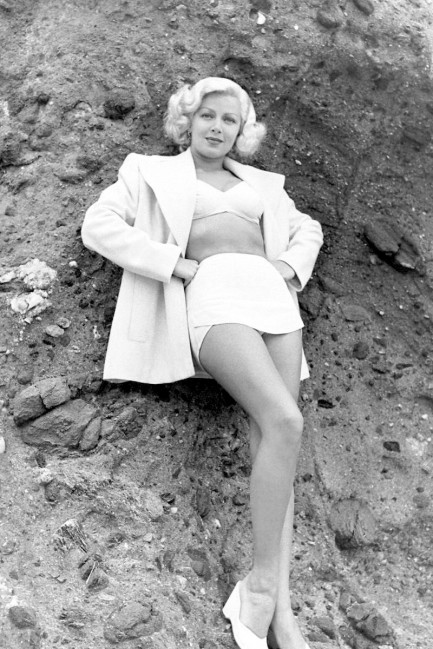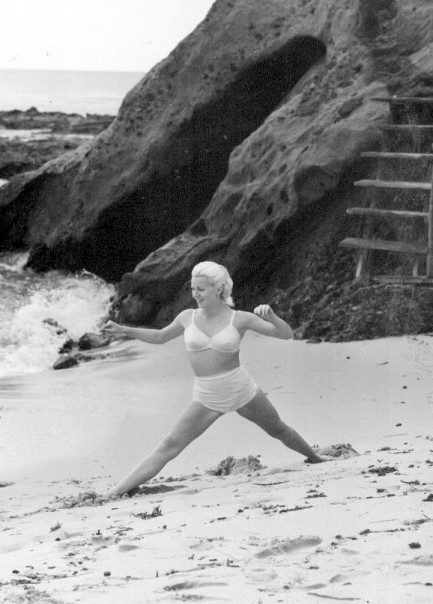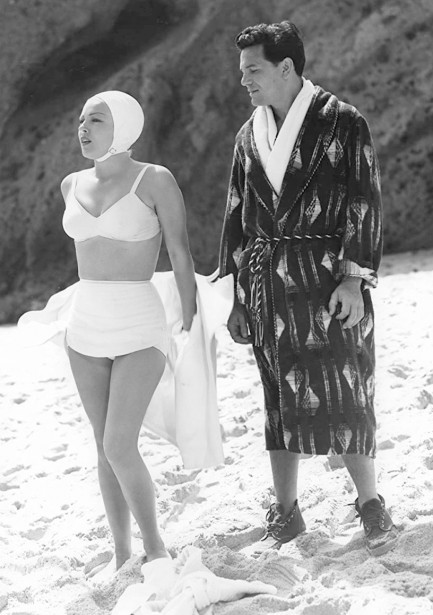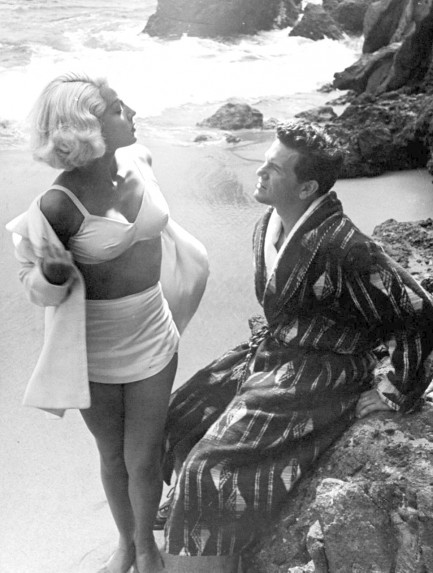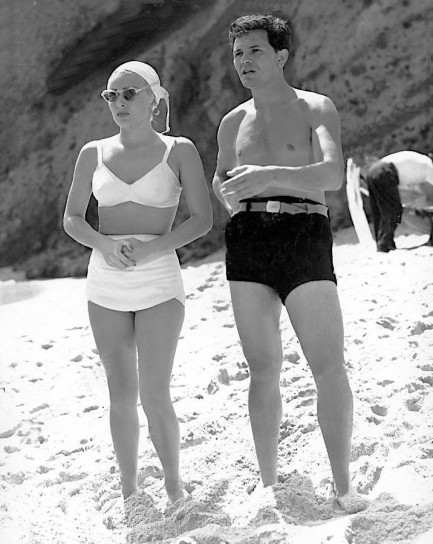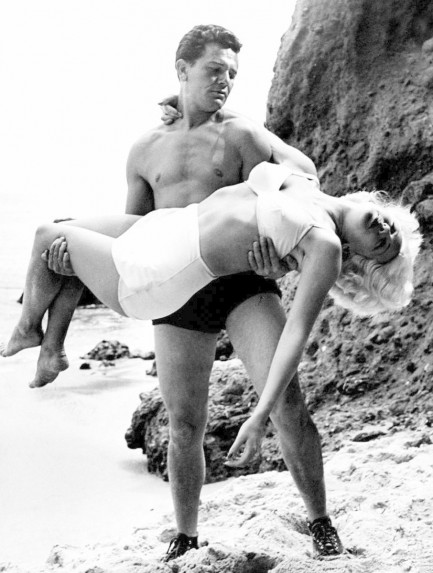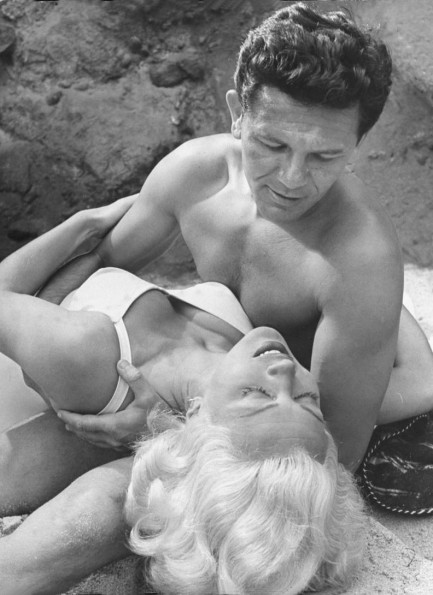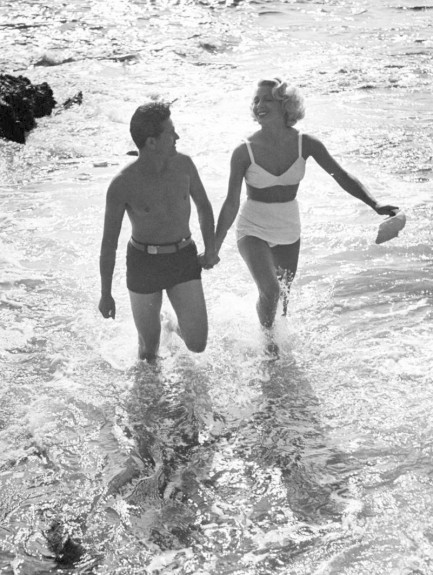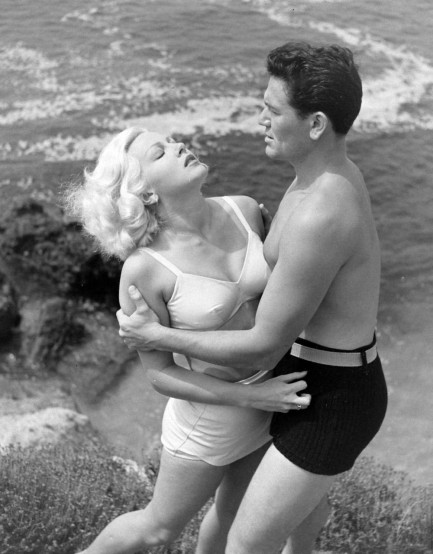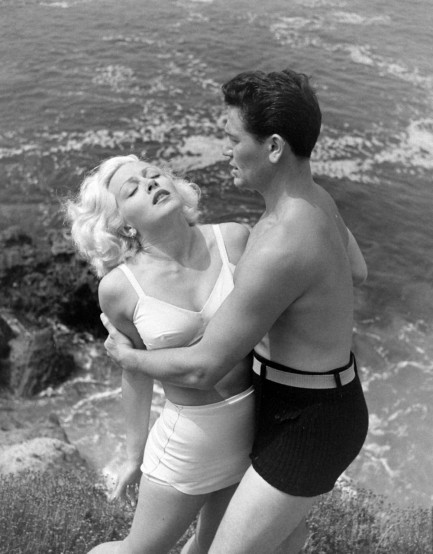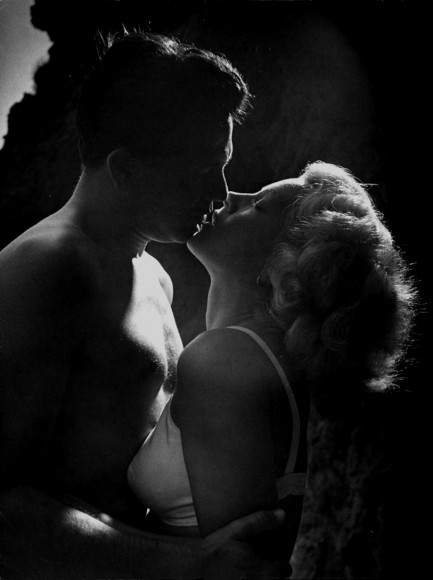 They're not really going anywhere but they look mighty good doing it. 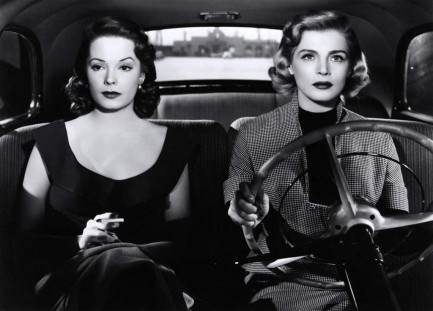
What's a period drama without a fake driving scene? Nearly all such sequences were shot in movie studios using two techniques—rear projection, which was standard for daytime driving, and both rear projection and lighting effects for simulating night driving. Many movie studios made production images of those scenes. For example, above you see Jane Greer and Lizabeth Scott, neither looking happy, going for a fake spin around Los Angeles in 1951's The Company She Keeps. We decided to make a collection of similar shots, so below we have more than twenty other examples (plus a couple of high quality screen grabs) with top stars such as Humphrey Bogart, Ingrid Bergman, Barbara Stanwyck, Robert Mitchum, and Raquel Welch. We've only scratched the surface of this theme, which means you can probably expect a second collection somewhere down the road. Incidentally, if you want to see Bogart at his coolest behind the wheel look here, and just because it's such a wonderful shot, look here for Elke Sommer as a passenger. Enjoy today's rides. 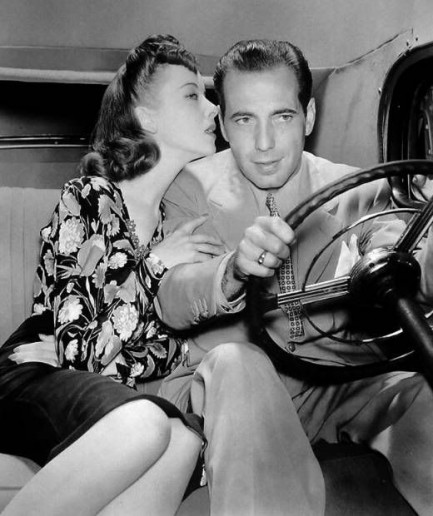 Humphrey Bogart tries to fake drive with Ida Lupino in his ear in 1941's High Sierra. Humphrey Bogart tries to fake drive with Ida Lupino in his ear in 1941's High Sierra.
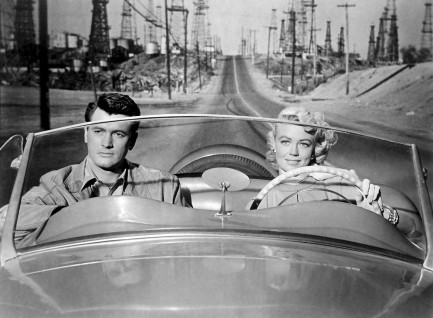 Dorothy Malone, Rock Hudson, and a rear projection of Long Beach, in 1956's Written on the Wind. Dorothy Malone, Rock Hudson, and a rear projection of Long Beach, in 1956's Written on the Wind.
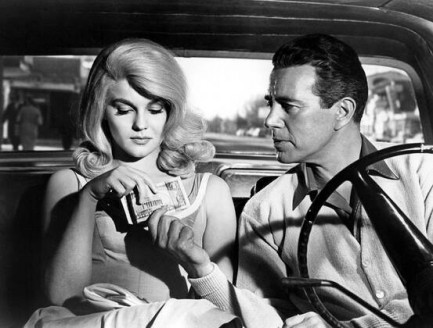 Ann-Margret and John Forsythe in Kitten with a Whip. We think they were parked at this point, but that's fine. Ann-Margret and John Forsythe in Kitten with a Whip. We think they were parked at this point, but that's fine.
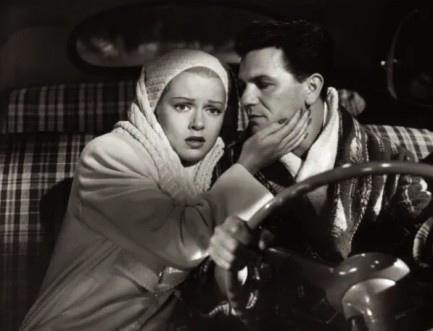 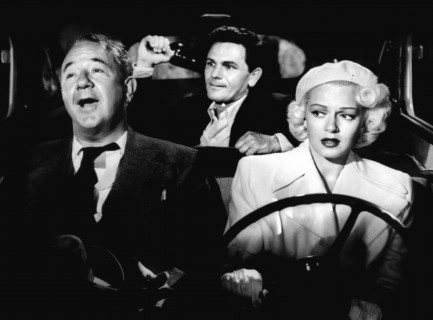 Two shots from 1946's The Postman Always Rings Twice with John Garfield and Lana Turner, followed by of shot of them with soon-to-be murdered Cecil Kellaway. Two shots from 1946's The Postman Always Rings Twice with John Garfield and Lana Turner, followed by of shot of them with soon-to-be murdered Cecil Kellaway.
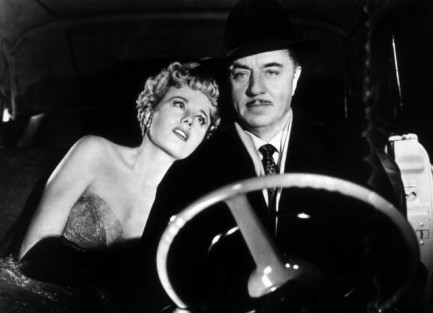 Shelley Winters, looking quite lovely here, fawns over dapper William Powell during a night drive in 1949's Take One False Step. Shelley Winters, looking quite lovely here, fawns over dapper William Powell during a night drive in 1949's Take One False Step.
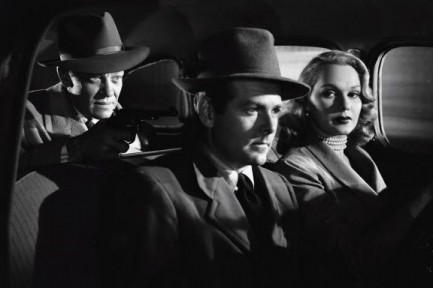 William Talman, James Flavin, and Adele Jergens share a tense ride in 1950's Armored Car Robbery. William Talman, James Flavin, and Adele Jergens share a tense ride in 1950's Armored Car Robbery.
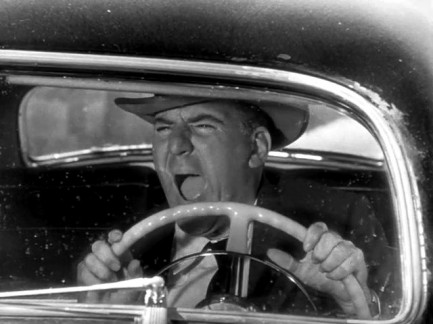 William Bendix rages in 1949's The Big Steal. William Bendix rages in 1949's The Big Steal.
 Frank Sinatra drives contemplatively in Young at Heart, from 1954. Frank Sinatra drives contemplatively in Young at Heart, from 1954.
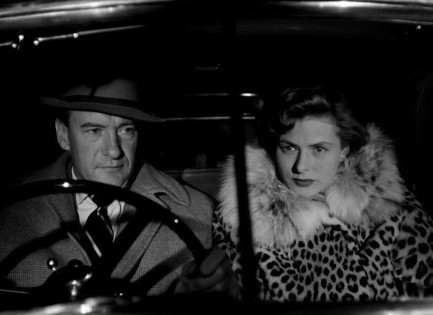 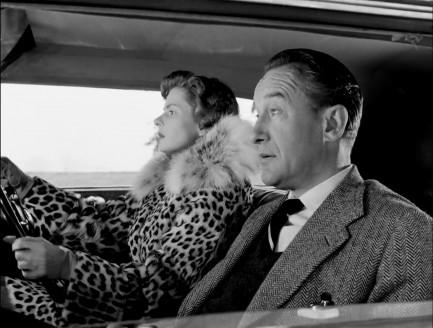 George Sanders drives Ingrid Bergman through Italy, and she returns the favor, in 1954's Viaggio in Italia. George Sanders drives Ingrid Bergman through Italy, and she returns the favor, in 1954's Viaggio in Italia.
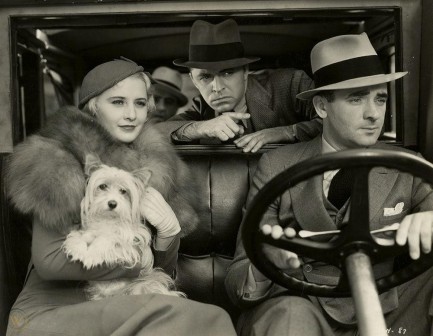 Harold Huber, Lyle Talbot, Barbara Stanwyck and her little dog too, from 1933's Ladies They Talk About. Harold Huber, Lyle Talbot, Barbara Stanwyck and her little dog too, from 1933's Ladies They Talk About.
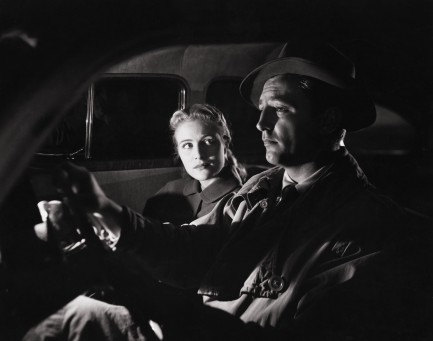 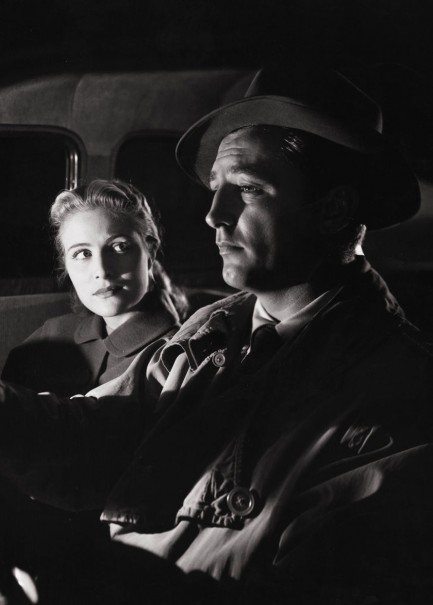 Virginia Huston tells Robert Mitchum his profile should be cast in bronze in 1947's Out of the Past. Virginia Huston tells Robert Mitchum his profile should be cast in bronze in 1947's Out of the Past.
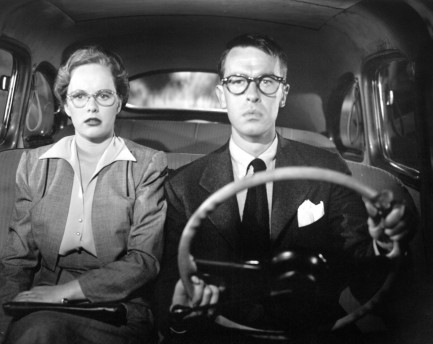 Peggy Cummins and John Dall suddenly realize they're wearing each other's glasses in 1950's Gun Crazy, a film that famously featured a real driving sequence, though not the one above. Peggy Cummins and John Dall suddenly realize they're wearing each other's glasses in 1950's Gun Crazy, a film that famously featured a real driving sequence, though not the one above.
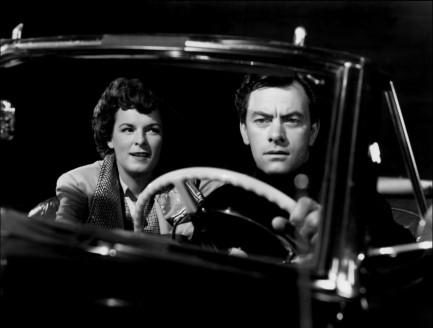 John Ireland and Mercedes McCambridge in 1951's The Scarf. John Ireland and Mercedes McCambridge in 1951's The Scarf.
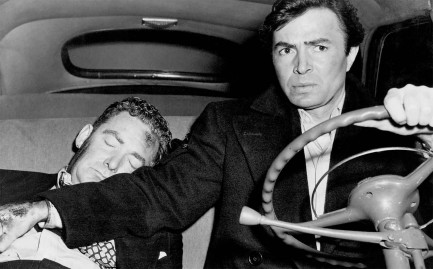 James Mason drives an unconscious Henry O'Neill in 1949's The Reckless Moment. Hopefully they're headed to an emergency room. James Mason drives an unconscious Henry O'Neill in 1949's The Reckless Moment. Hopefully they're headed to an emergency room.
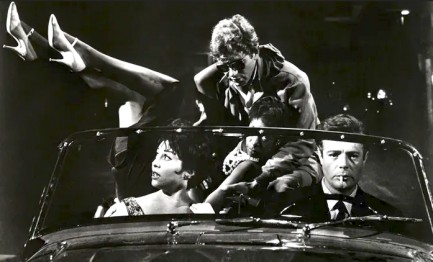 Marcello Mastroianni driving Walter Santesso, Mary Janes, and an unknown in 1960's La dolce vita. Marcello Mastroianni driving Walter Santesso, Mary Janes, and an unknown in 1960's La dolce vita.
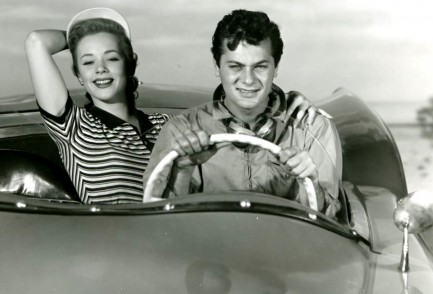 Tony Curtis thrills Piper Laurie with his convertible in 1954's Johnny Dark. Tony Curtis thrills Piper Laurie with his convertible in 1954's Johnny Dark.
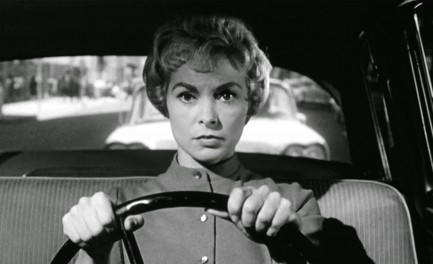 Janet Leigh drives distracted by worries, with no idea she should be thinking less about traffic and cops than cross-dressing psychos in 1960's Psycho. Janet Leigh drives distracted by worries, with no idea she should be thinking less about traffic and cops than cross-dressing psychos in 1960's Psycho.
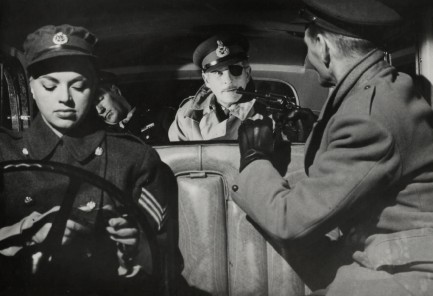 We're not sure who the passengers are in this one (the shot is from 1960's On the Double, and deals with Danny Kaye impersonating Wilfrid Hyde-White) but the driver is Diana Dors. We're not sure who the passengers are in this one (the shot is from 1960's On the Double, and deals with Danny Kaye impersonating Wilfrid Hyde-White) but the driver is Diana Dors.
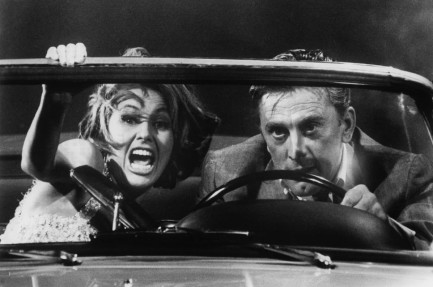 Kirk Douglas scares the bejesus out of Raquel Welch in 1962's Two Weeks in Another Town. We're familiar with her reaction, which is why we're glad the Pulp Intl. girlfriends don't need to drive here in Europe. Kirk Douglas scares the bejesus out of Raquel Welch in 1962's Two Weeks in Another Town. We're familiar with her reaction, which is why we're glad the Pulp Intl. girlfriends don't need to drive here in Europe.
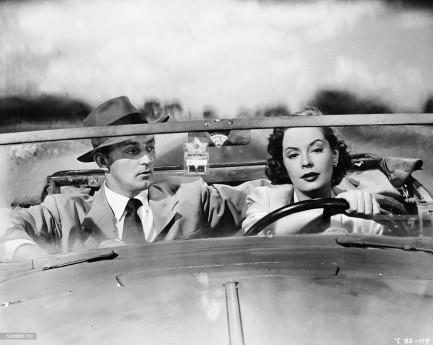 Robert Mitchum again, this time in the passenger seat, with Jane Greer driving (and William Bendix tailing them—already seen in panel ten), in 1949's The Big Steal. The film is notable for its many real driving scenes. Robert Mitchum again, this time in the passenger seat, with Jane Greer driving (and William Bendix tailing them—already seen in panel ten), in 1949's The Big Steal. The film is notable for its many real driving scenes.
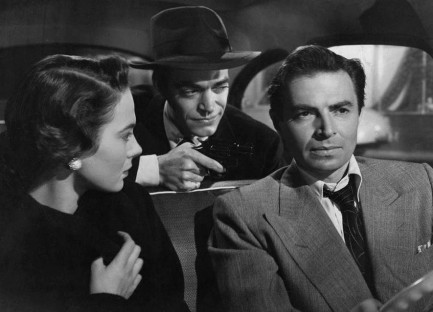 James Mason keeps cool as Jack Elam threatens him as Märta Torén watches from the passenger seat in 1950's One Way Street. James Mason keeps cool as Jack Elam threatens him as Märta Torén watches from the passenger seat in 1950's One Way Street.
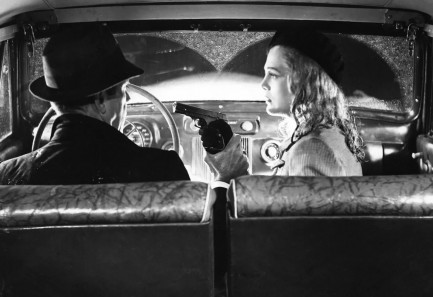 And finally, to take a new perspective on the subject, here's Bogart and Lizabeth Scott in 1947's Dead Reckoning. And finally, to take a new perspective on the subject, here's Bogart and Lizabeth Scott in 1947's Dead Reckoning.
 Hi, I'm just a typical smalltown wife and I have nothing murderous on my mind at all. 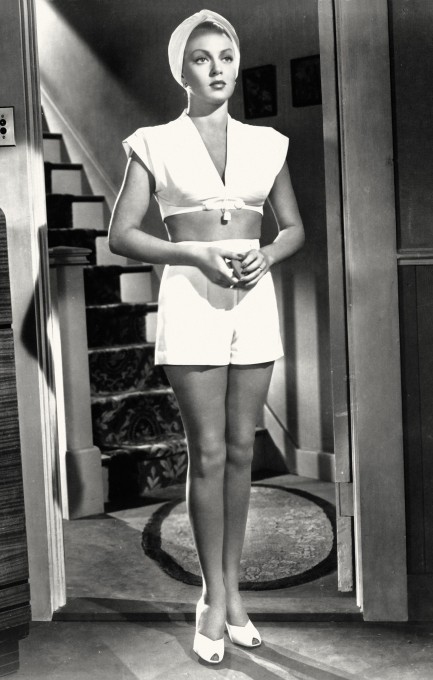
This photo shows the moment Lana Turner makes her screen entrance in the 1946 film noir The Postman Always Rings Twice, and as noir fans know, when the light hits an actress and glows in that special way trouble soon follows. Reviews of the film glowed too, and Turner went from star to supernova. If you haven't seen Postman you really should. For that matter, you should probably read the book.
 Cain is guaranteed to deliver. 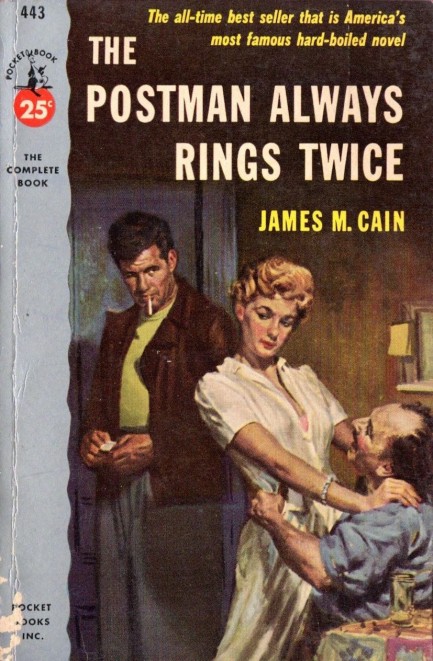
Above you see a Pocket Books cover for James M. Cain's The Postman Always Rings Twice, the 1953 edition. It has art from James Avanti, and is very different from Pocket's 1947 edition, which we showed you here. Avati is an illustrator we don't run across that often, but his work is easily recognizable, and always very good. See a few more examples here, here, and here. Needless to say (but we'll say it anyway), The Postman Always Rings Twice is a book you should read.
 Pair of Italian posters show that the postman really does ring twice. 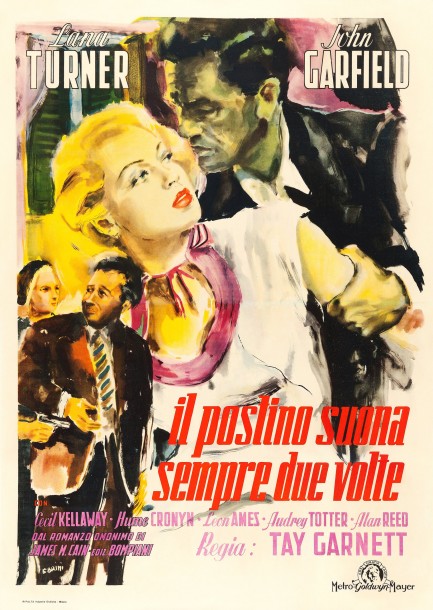 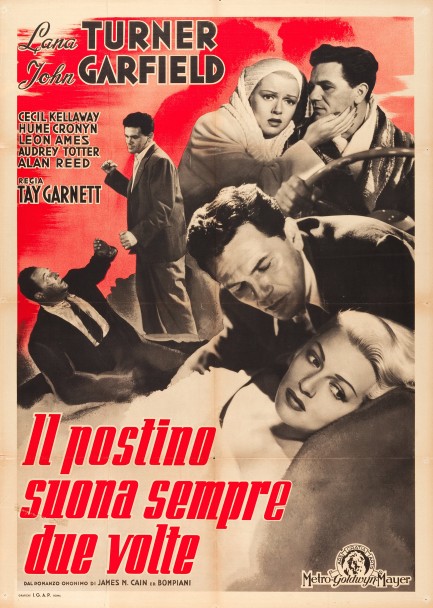
Above you see two beautiful Italian posters—one painted, the other a photo-illustration—for the classic film noir Il postino suona sempre due volte, better known as The Postman Always Rings Twice. It premiered in Italy today in 1947. We couldn't even begin to have enough wall space for all the promos we love, but if we owned the painted piece we might be willing to take down the photos of our families to make room. Hah, just kidding, fam. But could you blame us? The poster was painted by Ercole Brini and we think it's close to his best work. We've talked about the movie before. Shorter version: good sex makes a man's life a wreck.
 Neither snow nor rain nor heat nor gloom of night can stay her from the swift completion of her appointed seduction. 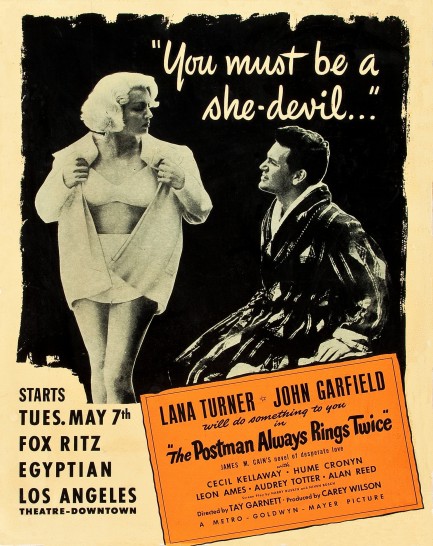
Above is a trolley card for the classic Lana Turner/John Garfield film noir The Postman Always Rings Twice, which according to the text, opened at the Egyptian Theatre in Los Angeles today in 1946. What's a trolley card? Pretty much self-explanatory, that. But you don't see many surviving examples, so this is a real treasure. The opening date represents new info. All the websites we checked said the movie opened in L.A. May 9. Maybe the managers of the Egyptian had connections at MGM. Awesome connections, we guess, to have helped them beat the rest of town by two full days. With that kind of juice, it's safe to assume they only had to ring once at the studio gates. We worked in the L.A. film industry. Relationships are everything. Or maybe the movie actually opened today, and the internet is wrong. Wouldn't be the first time. Not that we're trying to sound superior. We've made errors more than once. Interestingly, we were able to locate a vintage photo of the Egyptian with its marquee advertising Postman. It's a great movie. Nobody needs us to tell them that, but we did anyway, at this link. 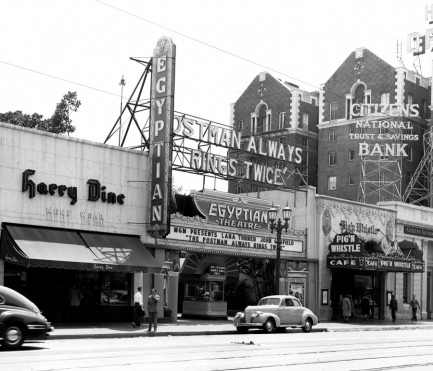 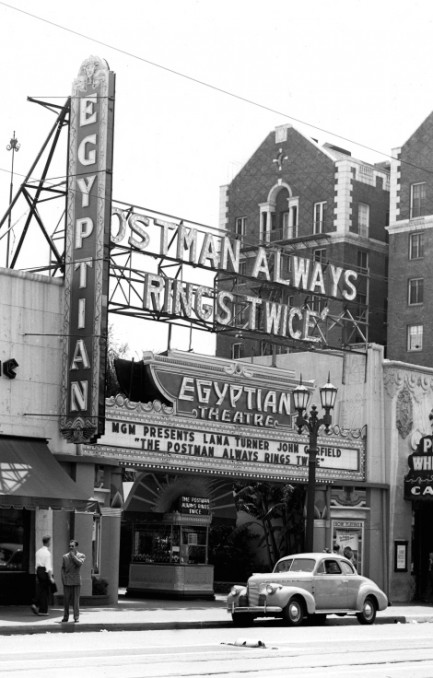
 Whoa... is the floor swaying or is that me? 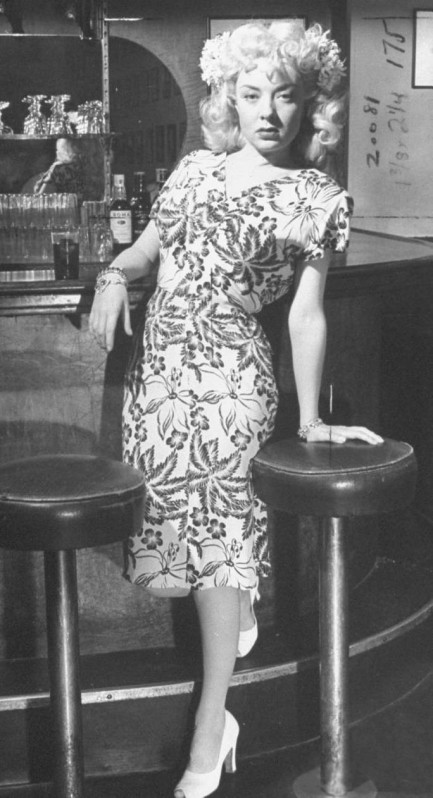
Audrey Totter isn't as well known today as she should be, considering she appeared in The Postman Always Rings Twice, The Lady in the Lake, F.B.I Girl, The Unsuspected, The Set-Up, Main Street After Dark, and Tension, but she was well appreciated in her day as a bad girl and film noir stalwart. Her career spanned radio, cinema, and television, and her life spanned ninety-five years, a good run on both counts. This promo photo of her in the typical bad girl's natural habitat—the local gin mill—was made in 1946 and appeared in Life magazine.
 There's no way to avoid paying what's owed. 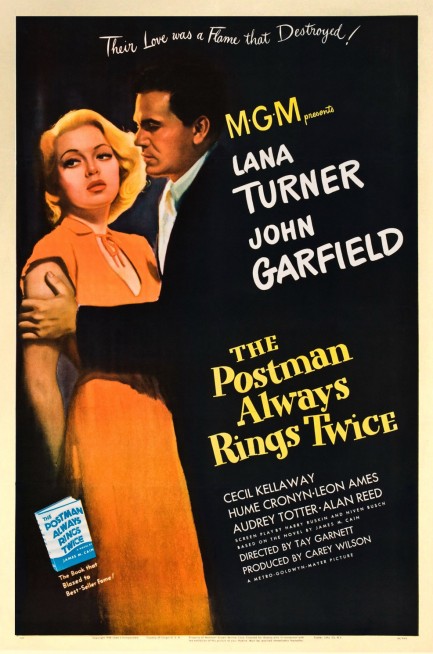
We just talked about the novel The Postman Always Rings Twice, so why not take a moment to focus on the movie, since it premiered today in 1946? Even if it weren't a widely known classic of lust and murder, when John Garfield fetches up at a rural gas station and sees a sign that reads “man wanted,” you suspect where the movie is going. Such a sign, if posted by Nick, the owner, could say “help wanted” or “job available,” but as worded it cleverly establishes the subtext that it's his platinum blonde wife Lana Turner that really wants a man. Garfield and Turner's mutual attraction is immediate and obsessive. The affair starts shortly thereafter, leads to a failed scheme to run off together, then finally devolves into a murder plot. But murder in film noir is never easy. Character-wise, some edges were rounded off James M. Cain's novel, which was a good decision—those two lovers are throughly reprehensible; Garfield and Turner at least generate some sympathy. But not too much—murderers are murderers and just desserts are just for a reason. Highly recommended flick. 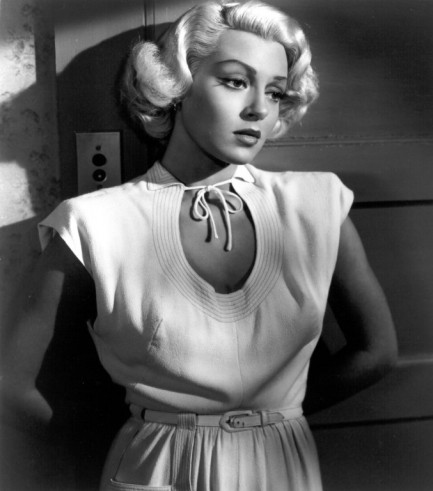 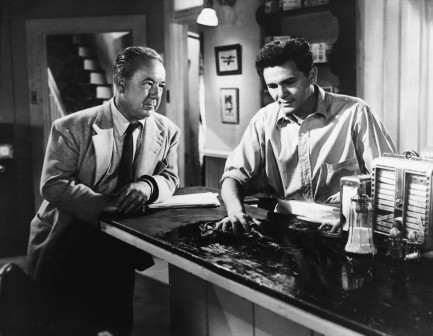 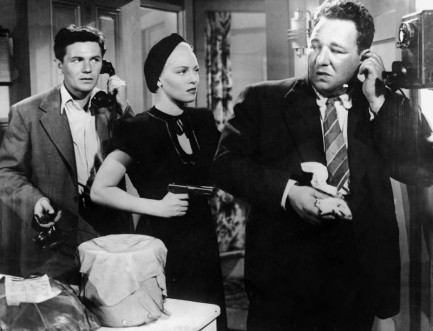 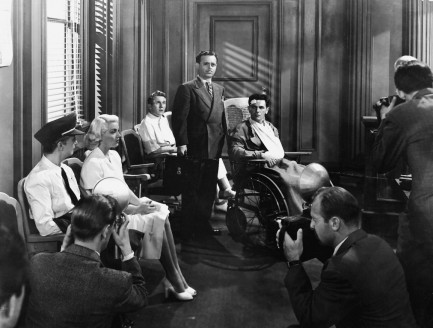 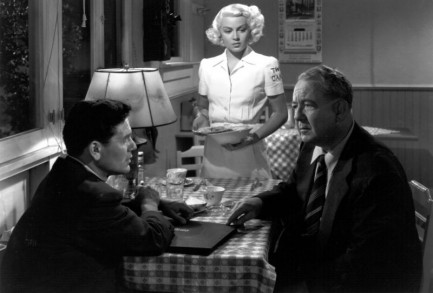 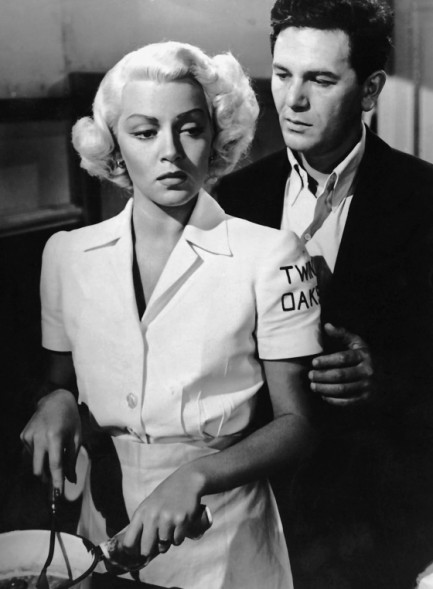
 Once you open it you've bought it. 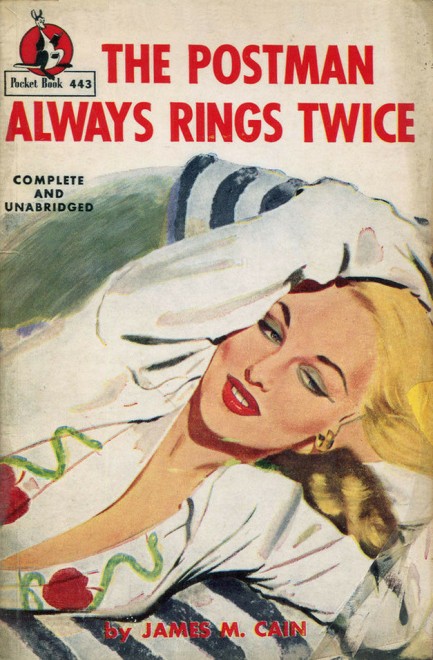
There are numerous vintage editions of James M. Cain's classic thriller The Postman Always Rings Twice out there, including one from the Spanish publisher Bruguera that we showed you years ago, but we recently got our hands on this 1947 Pocket Books edition, with a cover by Tom Dunn. We read the book, and there are several interesting aspects to the novel, including frightening violence, a generally amoral view of the world, and this: I took her in my arms and mashed my mouth up against hers... “Bite me! Bite me!” I bit her. I sunk my teeth into her lips so deep I could feel the blood spurt into my mouth. It was running down her neck when I carried her upstairs. Obsessive lust. We get it. Still, it's bizarre. Then there's this: "Well, get this. I'm just as white as you are, see? I may have dark hair and look a little [Mexican], but I'm just as white as you are." [snip] It was being married to that Greek that made her feel she wasn't white. Caustic racism. Later the femme fatale, Cora, explains that she simply cannot tolerate having a child with the aforementioned husband, who she married for security. “I can't have no greasy Greek child, Frank. I can't, that's all.” Cain establishes with this style of banter that his two main characters are bad people. But The Postman Always Rings Twice is great, and nobody ever said literature is supposed to be easy to read. This is fast-paced pulp fiction that's about as good as you'll ever find. Highly recommended.
 The postman will ring as long as it takes. 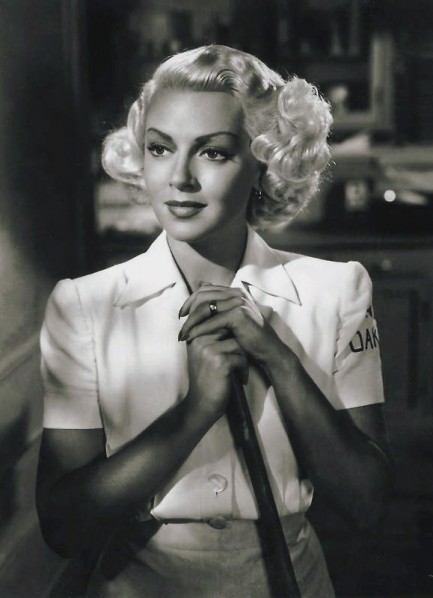
This shot of American actress Lana Turner shows her at the height of her fame during the filming of the 1946 film noir The Postman Always Rings Twice. Turner’s own life rivaled that of any of her characters, encompassing the murder of her father to her daughter stabbing a Mafia thug to death.

|
 |

The headlines that mattered yesteryear.
2003—Hope Dies
Film legend Bob Hope dies of pneumonia two months after celebrating his 100th birthday. 1945—Churchill Given the Sack
In spite of admiring Winston Churchill as a great wartime leader, Britons elect
Clement Attlee the nation's new prime minister in a sweeping victory for the Labour Party over the Conservatives. 1952—Evita Peron Dies
Eva Duarte de Peron, aka Evita, wife of the president of the Argentine Republic, dies from cancer at age 33. Evita had brought the working classes into a position of political power never witnessed before, but was hated by the nation's powerful military class. She is lain to rest in Milan, Italy in a secret grave under a nun's name, but is eventually returned to Argentina for reburial beside her husband in 1974. 1943—Mussolini Calls It Quits
Italian dictator Benito Mussolini steps down as head of the armed forces and the government. It soon becomes clear that Il Duce did not relinquish power voluntarily, but was forced to resign after former Fascist colleagues turned against him. He is later installed by Germany as leader of the Italian Social Republic in the north of the country, but is killed by partisans in 1945.
|

|
|

It's easy. We have an uploader that makes it a snap. Use it to submit your art, text, header, and subhead. Your post can be funny, serious, or anything in between, as long as it's vintage pulp. You'll get a byline and experience the fleeting pride of free authorship. We'll edit your post for typos, but the rest is up to you. Click here to give us your best shot.

|
|


 Humphrey Bogart tries to fake drive with Ida Lupino in his ear in 1941's High Sierra.
Humphrey Bogart tries to fake drive with Ida Lupino in his ear in 1941's High Sierra. Dorothy Malone, Rock Hudson, and a rear projection of Long Beach, in 1956's Written on the Wind.
Dorothy Malone, Rock Hudson, and a rear projection of Long Beach, in 1956's Written on the Wind. Ann-Margret and John Forsythe in Kitten with a Whip. We think they were parked at this point, but that's fine.
Ann-Margret and John Forsythe in Kitten with a Whip. We think they were parked at this point, but that's fine.
 Two shots from 1946's The Postman Always Rings Twice with John Garfield and Lana Turner, followed by of shot of them with soon-to-be murdered Cecil Kellaway.
Two shots from 1946's The Postman Always Rings Twice with John Garfield and Lana Turner, followed by of shot of them with soon-to-be murdered Cecil Kellaway.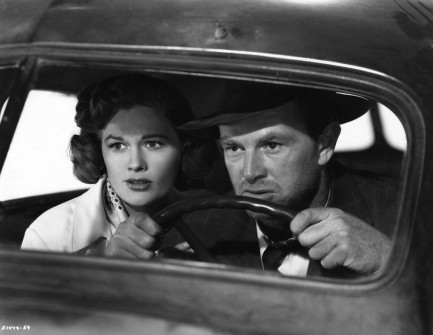
 Shelley Winters, looking quite lovely here, fawns over dapper William Powell during a night drive in 1949's Take One False Step.
Shelley Winters, looking quite lovely here, fawns over dapper William Powell during a night drive in 1949's Take One False Step. William Talman, James Flavin, and Adele Jergens share a tense ride in 1950's Armored Car Robbery.
William Talman, James Flavin, and Adele Jergens share a tense ride in 1950's Armored Car Robbery. William Bendix rages in 1949's The Big Steal.
William Bendix rages in 1949's The Big Steal. Frank Sinatra drives contemplatively in Young at Heart, from 1954.
Frank Sinatra drives contemplatively in Young at Heart, from 1954.
 George Sanders drives Ingrid Bergman through Italy, and she returns the favor, in 1954's Viaggio in Italia.
George Sanders drives Ingrid Bergman through Italy, and she returns the favor, in 1954's Viaggio in Italia. Harold Huber, Lyle Talbot, Barbara Stanwyck and her little dog too, from 1933's Ladies They Talk About.
Harold Huber, Lyle Talbot, Barbara Stanwyck and her little dog too, from 1933's Ladies They Talk About.
 Virginia Huston tells Robert Mitchum his profile should be cast in bronze in 1947's Out of the Past.
Virginia Huston tells Robert Mitchum his profile should be cast in bronze in 1947's Out of the Past.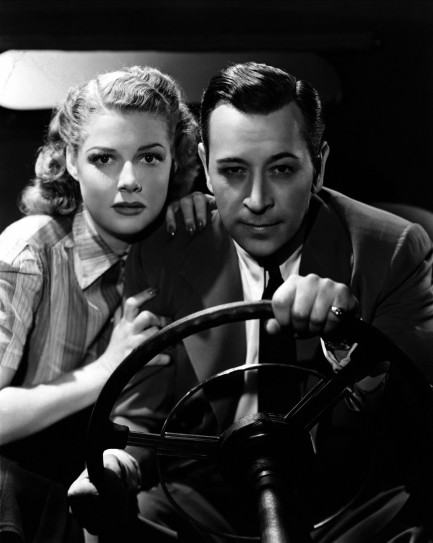 Ann Sheridan hangs onto to an intense George Raft in 1940's They Drive by Night.
Ann Sheridan hangs onto to an intense George Raft in 1940's They Drive by Night. Peggy Cummins and John Dall suddenly realize they're wearing each other's glasses in 1950's Gun Crazy, a film that famously featured a real driving sequence, though not the one above.
Peggy Cummins and John Dall suddenly realize they're wearing each other's glasses in 1950's Gun Crazy, a film that famously featured a real driving sequence, though not the one above. John Ireland and Mercedes McCambridge in 1951's The Scarf.
John Ireland and Mercedes McCambridge in 1951's The Scarf. James Mason drives an unconscious Henry O'Neill in 1949's The Reckless Moment. Hopefully they're headed to an emergency room.
James Mason drives an unconscious Henry O'Neill in 1949's The Reckless Moment. Hopefully they're headed to an emergency room. Marcello Mastroianni driving Walter Santesso, Mary Janes, and an unknown in 1960's La dolce vita.
Marcello Mastroianni driving Walter Santesso, Mary Janes, and an unknown in 1960's La dolce vita. Tony Curtis thrills Piper Laurie with his convertible in 1954's Johnny Dark.
Tony Curtis thrills Piper Laurie with his convertible in 1954's Johnny Dark. Janet Leigh drives distracted by worries, with no idea she should be thinking less about traffic and cops than cross-dressing psychos in 1960's Psycho.
Janet Leigh drives distracted by worries, with no idea she should be thinking less about traffic and cops than cross-dressing psychos in 1960's Psycho. We're not sure who the passengers are in this one (the shot is from 1960's On the Double, and deals with Danny Kaye impersonating Wilfrid Hyde-White) but the driver is Diana Dors.
We're not sure who the passengers are in this one (the shot is from 1960's On the Double, and deals with Danny Kaye impersonating Wilfrid Hyde-White) but the driver is Diana Dors. Kirk Douglas scares the bejesus out of Raquel Welch in 1962's Two Weeks in Another Town. We're familiar with her reaction, which is why we're glad the Pulp Intl. girlfriends don't need to drive here in Europe.
Kirk Douglas scares the bejesus out of Raquel Welch in 1962's Two Weeks in Another Town. We're familiar with her reaction, which is why we're glad the Pulp Intl. girlfriends don't need to drive here in Europe. Robert Mitchum again, this time in the passenger seat, with Jane Greer driving (and William Bendix tailing them—already seen in panel ten), in 1949's The Big Steal. The film is notable for its many real driving scenes.
Robert Mitchum again, this time in the passenger seat, with Jane Greer driving (and William Bendix tailing them—already seen in panel ten), in 1949's The Big Steal. The film is notable for its many real driving scenes. James Mason keeps cool as Jack Elam threatens him as Märta Torén watches from the passenger seat in 1950's One Way Street.
James Mason keeps cool as Jack Elam threatens him as Märta Torén watches from the passenger seat in 1950's One Way Street. And finally, to take a new perspective on the subject, here's Bogart and Lizabeth Scott in 1947's Dead Reckoning.
And finally, to take a new perspective on the subject, here's Bogart and Lizabeth Scott in 1947's Dead Reckoning.

